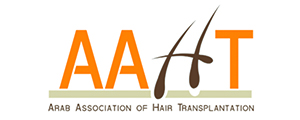VOLTAR
IMCAS World Congress 2019
IMCAS World Congress 2019
Programa
S036
Complications of hair transplants (in collaboration with AAHT)
Partner of the session

AAHT
Arab Association for Hair Transplantation
Internacional
Sala: Room 241 (level 2)
Data: quinta-feira 31 janeiro 2019 de 11:30 às 12:30
Formato: FOCUS SESSION > lectures covering a major topic of the congress
Data: quinta-feira 31 janeiro 2019 de 11:30 às 12:30
Formato: FOCUS SESSION > lectures covering a major topic of the congress
Apresentações desta sessão
| Horas | Palestrantes | Título da apresentação | Resumo | Número |
| 11:30 | Presentation of the Arab Association for Hair Transplantation (AAHT) | Visualizar | 79497 | |
| 11:35 | How to avoid post-operative complications after hair FUT | Visualizar | 73865 | |
| 11:47 | Complications of hair transplant | 72547 | ||
| 11:59 | Afro-American hair transplantation | Visualizar | 76861 | |
| 12:11 | Beard and eyebrow transplantation | 76893 | ||













